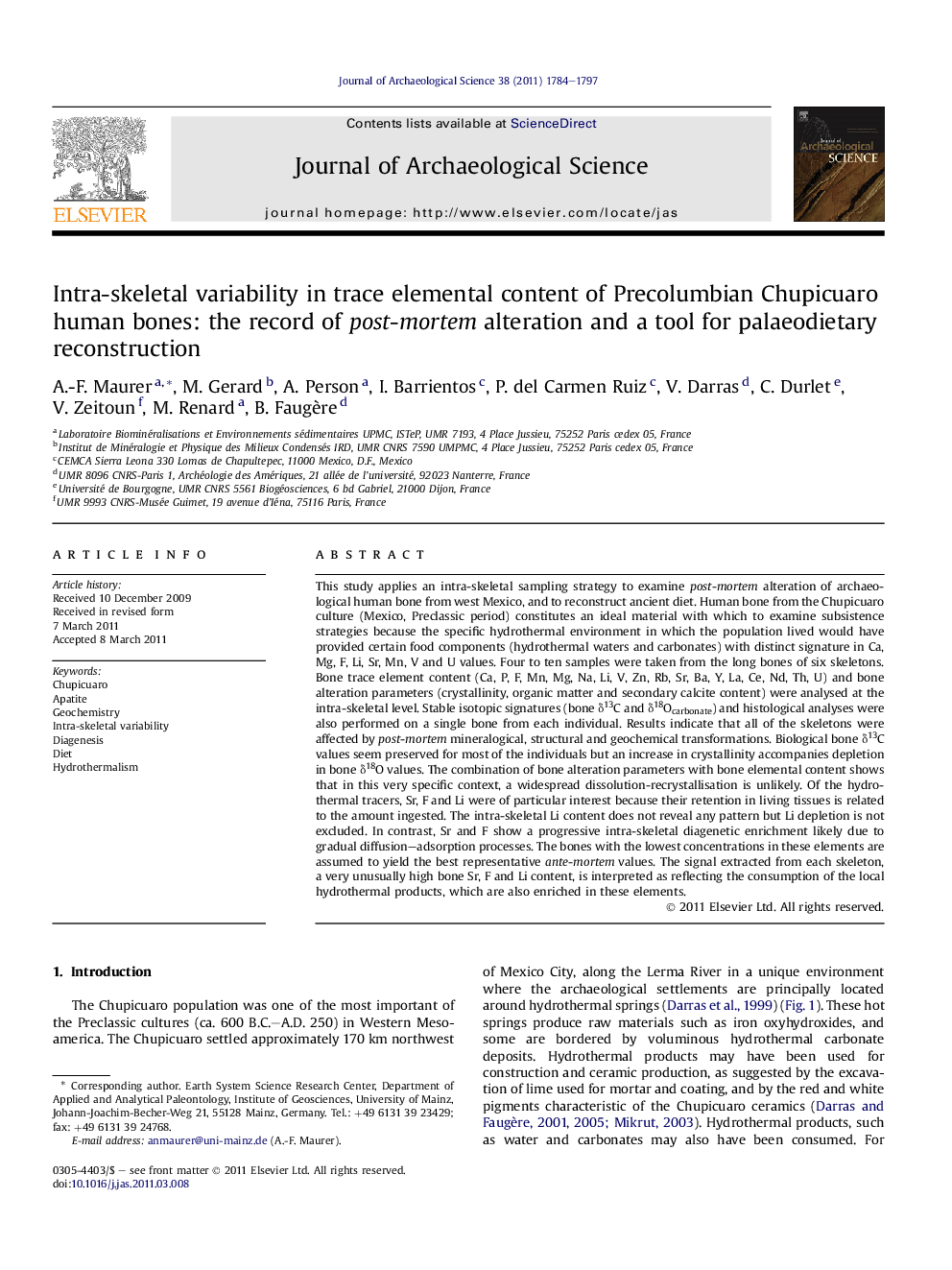| کد مقاله | کد نشریه | سال انتشار | مقاله انگلیسی | نسخه تمام متن |
|---|---|---|---|---|
| 1035810 | 943866 | 2011 | 14 صفحه PDF | دانلود رایگان |

This study applies an intra-skeletal sampling strategy to examine post-mortem alteration of archaeological human bone from west Mexico, and to reconstruct ancient diet. Human bone from the Chupicuaro culture (Mexico, Preclassic period) constitutes an ideal material with which to examine subsistence strategies because the specific hydrothermal environment in which the population lived would have provided certain food components (hydrothermal waters and carbonates) with distinct signature in Ca, Mg, F, Li, Sr, Mn, V and U values. Four to ten samples were taken from the long bones of six skeletons. Bone trace element content (Ca, P, F, Mn, Mg, Na, Li, V, Zn, Rb, Sr, Ba, Y, La, Ce, Nd, Th, U) and bone alteration parameters (crystallinity, organic matter and secondary calcite content) were analysed at the intra-skeletal level. Stable isotopic signatures (bone δ13C and δ18Ocarbonate) and histological analyses were also performed on a single bone from each individual. Results indicate that all of the skeletons were affected by post-mortem mineralogical, structural and geochemical transformations. Biological bone δ13C values seem preserved for most of the individuals but an increase in crystallinity accompanies depletion in bone δ18O values. The combination of bone alteration parameters with bone elemental content shows that in this very specific context, a widespread dissolution-recrystallisation is unlikely. Of the hydrothermal tracers, Sr, F and Li were of particular interest because their retention in living tissues is related to the amount ingested. The intra-skeletal Li content does not reveal any pattern but Li depletion is not excluded. In contrast, Sr and F show a progressive intra-skeletal diagenetic enrichment likely due to gradual diffusion–adsorption processes. The bones with the lowest concentrations in these elements are assumed to yield the best representative ante-mortem values. The signal extracted from each skeleton, a very unusually high bone Sr, F and Li content, is interpreted as reflecting the consumption of the local hydrothermal products, which are also enriched in these elements.
► Intra-skeletal sampling strategy based on skeletons from the Chupicuaro Culture.
► Skeletal variability in trace elemental content used to control post-mortem changes.
► Extraction of skeletal representative values (F, Sr, Li) of the in vivo signature.
► Hydrothermal diet recorded in the Chupicuaro skeletons.
Journal: Journal of Archaeological Science - Volume 38, Issue 8, August 2011, Pages 1784–1797